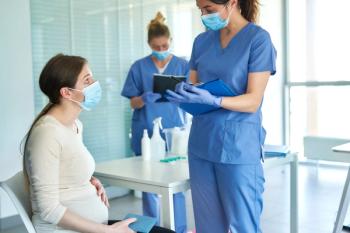
A recent study in Finland finds 2 major contributing factors to allergic disease in infants with familial risk.

A recent study in Finland finds 2 major contributing factors to allergic disease in infants with familial risk.

Trigger bans took effect on Thursday, August 25, 2022, in Tennessee, Idaho, and Texas, banning abortion from conception in Tennessee and Idaho and enacting harsher penalties for providers in Texas.

Investigators found that opioid use during pregnancy increases the relative risk of neonatal opioid withdrawal syndrome in newborns.

Researchers have found that maternal antenatal corticosteroid treatment can lead to increased risk of psychological developmental and neurosensory disorders in children.

Despite increasing the rate of diagnoses and healthcare utilization, the GEMS study found a lower glycemic criterion for diagnosis of gestational diabetes was not associated with a reduced risk of negative outcomes for mother and offspring.

A recent study showed no correlation between prenatal exposure to triptans and diagnosis or symptoms of ADHD in children.

Data from the US Department of Health and Human Services has shown an increase in GDM rate from 2016 to 2020, with a greater increase observed from 2019 to 2020.

A 4-week-old boy presents with creamy white patches on his lips, right and left buccal mucosa, palate, and tongue.

Physicians groups, analysts, have praised insurance premium subsidies, Medicare drug cost caps.

ASP treatment lowered the presence of sepsis risk factors in preterm infants.

Maternal deaths in the United States rose by a staggering 33% after the onset of the COVID-19 pandemic in March 2020, which is a significantly higher percentage than the 22% overall excess death estimate linked to the pandemic, according to a research letter published in JAMA Network Open.

Residing in a socioeconomically disadvantaged neighborhood was linked to moderately decreased fecundability, according to a study published in JAMA Network Open.

Both higher fetal and infant weight growth patterns are linked to early markers of impaired arterial health, according to a study published in JAMA Network Open.

A study published in JAMA Network Open found that maternal prepregnancy obesity in the United States is associated with an elevated risk of severe maternal morbidity (SMM) and/or mortality.

Considering the many repercussions of overturning Roe v Wade—and the psychiatric implications for our patients.

What we know about monkeypox in pregnancy, including treatment recommendations, vaccination, and postpartum care.

Placental cord drainage may be the key to managing the third stage of labor, according to research in BMC Pregnancy and Childbirth.

Living farther from an abortion facility results in delayed or inaccessible abortion care, according to a study published in JAMA Network Open.

Risk assessment and management of brain arteriovenous malformations in pregnancy.

Gregory Weiss, MD, provides perspective on a recent study suggesting women with gestational hypertension were at an increased risk of chronic hypertension later in life.

Prenatal exposure to the antiseizure medications topiramate and valproate may cause a significantly increased risk of neurodevelopmental disorders in offspring, according to a cohort study in JAMA Neurology.

The authors of a study in JAMA Pediatrics sought to answer the question: What is the burden of neonatal preterm birth at the global, regional and national levels?

As we were going to press with the July issue, the United States Supreme Court overturned Roe v Wade, eliminating the constitutional right to an abortion, and leaving the question of abortion rights to the states.

How you can help patients during the current attack on their reproductive autonomy

A research letter in JAMA Health Forum found significant improvements in consistent postpartum coverage in the United States during the COVID-19 pandemic, driven by increases in consistent Medicaid and lower rates of Medicaid loss for postpartum mothers.